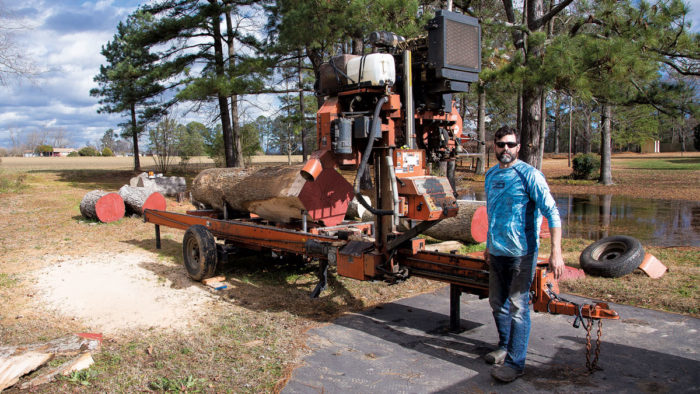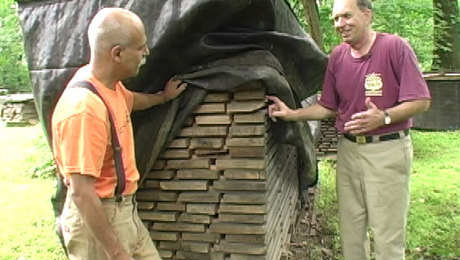Turn Your Logs into Lumber
Jason Stephens has been having trees milled for more than a decade. In this article, he shares what to look for, how to dry the boards, and how to avoid pitfalls when having lumber milled.
Synopsis: There are a lot of reasons why woodworkers will seek out fallen trees and have them milled as a source for lumber. Cost is one, but more often the reason is that it’s exciting and fun. Jason Stephens has been doing it for more than a decade. Here he shares what to look for, what to expect, how to dry the boards, and how to avoid pitfalls, whether you are bringing a portable mill to your log or transporting the log to a stationary mill. As a bonus, we take a look at Matt Cremona’s professional lumber milling operation.
I remember finding the very first tree I milled, a white oak with a massive crown that had landed on farmland. It was 2007, and I was driving through the back roads of Virginia. I’ve been hooked since. In the intervening years, I’ve had a number of logs milled by a number of sawyers. All those board feet have taught me a lot about having your lumber milled—what to look for, what to
expect, how to dry the boards, and how to avoid pitfalls. I’ve also learned that cutting open a tree and seeing what’s inside never gets old.
Why mill your own
Before I get into the how, I want to talk about the why. Why go through all the trouble of finding a tree, preparing it, and having it milled? It comes down to three things: cost, control, and excitement.

Having your lumber milled can save a lot of money because you’re paying only for the actual milling; the wood’s already yours. The cost benefit becomes most apparent when you’re dealing with wide, thick slabs. When I took a 12-ft.-long, 4-ft.-dia. white oak log to be milled, my 14/4 boards cost as much to be milled as thinner ones. But if I had gone to a lumberyard to buy just one of those slabs, I could have paid over a thousand dollars. And you generally won’t have to pay a dime for the actual logs. Plenty of people are eager to have you take care of their pesky downed trees after a storm, for example.
Second, the process affords you the choicest cuts. Think that log will work best quartersawn? Do it. Is that other one a prime candidate for live-edge, flatsawn stock? It’s your call. Is it wiser to do a mix of both for this third log? You’re the boss.Plus, there’s no combination of boards that are better matched than ones that come from the same tree.
To view the entire article, please click the View PDF button below.
 |
|
 |
|
 |
Fine Woodworking Recommended Products

AnchorSeal Log and Lumber End-Grain Sealer

Hedgehog featherboards

Incra Miter 1000HD























Log in or create an account to post a comment.
Sign up Log in